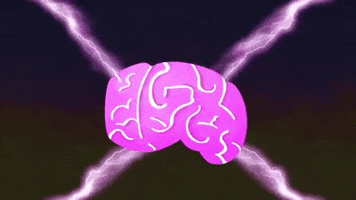
Let's be honest, you became a teacher because you're a superhero, not a robot. But sometimes, lesson planning—especially for analytical writing—feels like a job for a machine. You spend hours reading a text, writing questions, creating a model response, and then a student asks, "Wait, what's a 'topic sentence' again?" and you have to start all over.
What if there was a way to get the brainy part of the job done in seconds, leaving you with more time to be the inspiring, amazing teacher you are?
Meet the RACE and PEEL generators on the teacher:smarter platform, your new AI-powered sidekicks for a late elementary, middle, or early high school classroom. They are not just tools; they’re your personal curriculum designers, ready to transform any text into a powerful, skill-building activity.
The RACE Generator: Your Personal Comprehension Coach
Remember when your students' text-based answers were a single, glorious word? The RACE writing strategy is designed to fix that by teaching them to Restate the question, Answer it, Cite evidence, and Explain their reasoning. The problem is, generating good questions and model answers takes a heroic effort.
Enter the RACE generator. You just paste in a text, and like a digital genie, it gives you two sets of questions, perfectly leveled for your classroom.
Level 1 questions are all about retrieval, helping you check for basic understanding.
Level 2 questions are the good stuff—the inferencing, the analysis, the cause-and-effect thinking that makes a brain grow big and strong.
And here's the magic trick: for every question, it gives you a complete, three-sentence model answer. This isn't just a cheat sheet; it's a teaching tool. It's a clear, concise example of what a perfect answer looks like, complete with an MLA-style citation to boot.

Whole-Class Modeling: Project a model response on the board. With the class, dissect each sentence to show how it fulfills the R, A, C, and E parts. It's like a behind-the-scenes look at a professional's brain.
Quick Quizzes: Need a quick comprehension check for a short story? Paste the text into the generator and instantly get a bank of questions to use in a quiz or exit ticket.
Literary Jigsaw: Give different groups of students different Level 1 and Level 2 questions. They work to find the answers, then come together to share their findings and build a comprehensive understanding of the text.
The PEEL Generator: Your Paragraph-Building Partner

The PEEL generator is here to help you get ahead of that struggle. It generates four high-quality, high-stakes questions that require students to think deeply about a text's themes, characters, and author’s purpose. For each question, it creates a fully formed model paragraph that flawlessly demonstrates the PEEL method.
The most valuable part of this tool is the "Explanation" section of the model response. It doesn't just rephrase the quote; it explains the how and the why, digging into the subtext and connecting the evidence back to the bigger picture. This is the explicit instruction students need to move beyond simple summarization and into true analysis.
A Little Bit of That in Your Classroom:
Argumentative Essay Warm-Ups: Use a PEEL question as a prompt for a warm-up. Have students write just the "Point" and "Evidence" to get their brains warmed up for the day's lesson.
Gallery Walk: Print the generated questions and model responses. Put them up around the room and have students "gallery walk" to see how each part of the PEEL structure fits together.
Partner Practice: Give pairs of students one of the generated questions. They can collaboratively build their own PEEL paragraph, then compare it to the model answer to see what they nailed and what they could improve.
In a profession where every minute counts, the RACE and PEEL generators on teacher:smarter are powerful allies. They handle the heavy lifting of question creation and answer modeling, freeing you up to do what only you can do: inspire a new generation of clever, witty, and critically-thinking humans.
Comments
Post a Comment